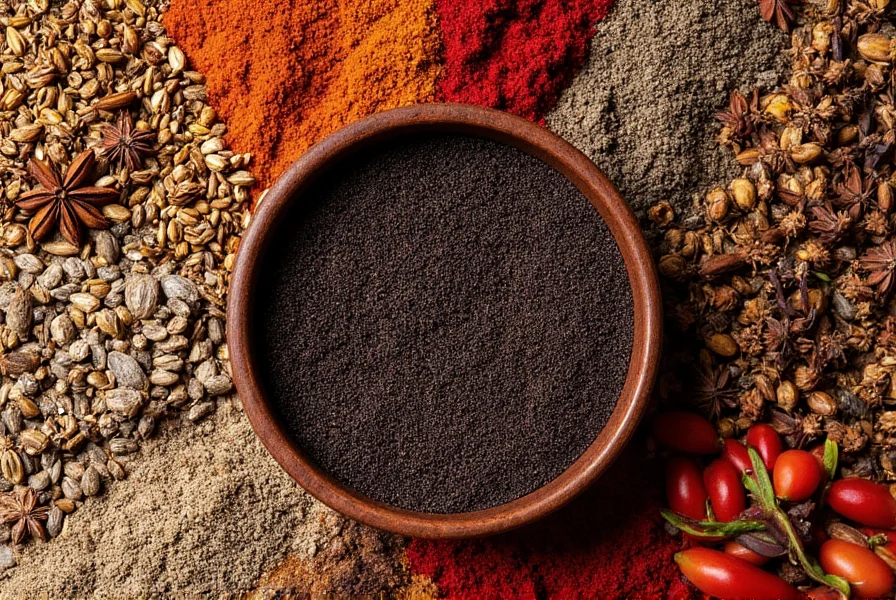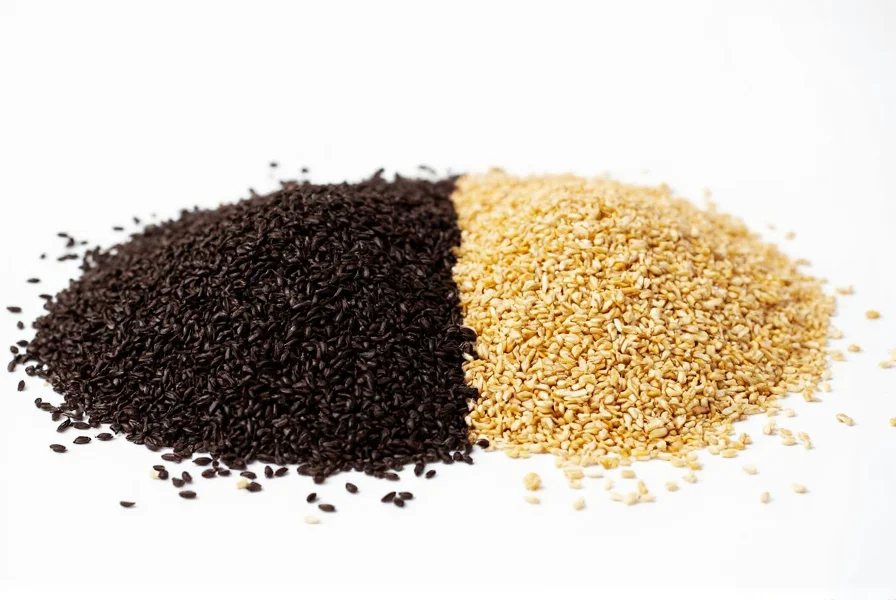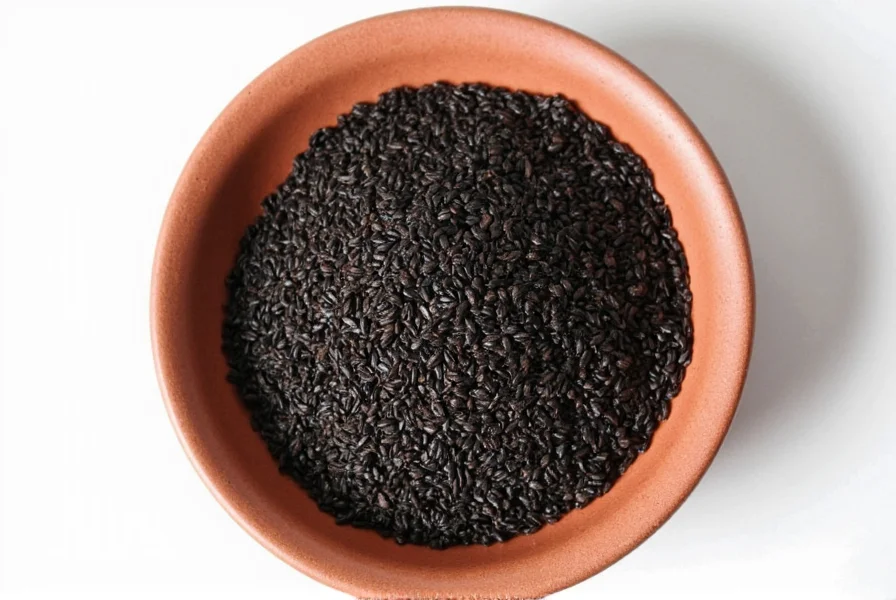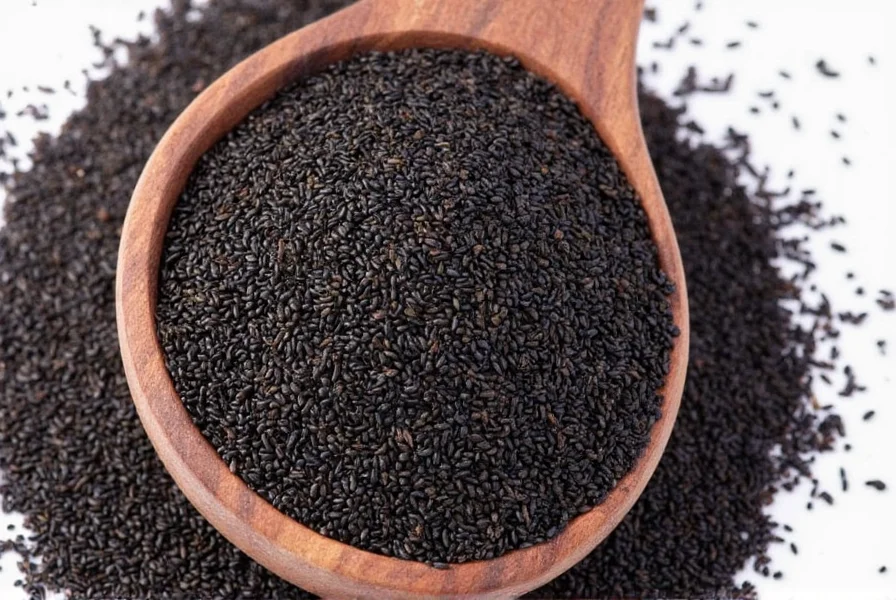Table of Contents
Black sesame delivers a complex flavor profile combining rich nuttiness (similar to toasted almonds), deep earthiness, subtle sweetness, and a distinctive toasted bitterness that becomes more pronounced when heated. Unlike white sesame, it contains higher levels of sesamin and sesamol compounds that create its signature smoky depth and lingering finish—approximately 30% more intense in flavor impact according to culinary science research.

Detailed Flavor Profile Analysis
Professional chefs and flavor chemists describe black sesame's taste through three distinct phases:
| Phase | Flavor Characteristics | Chemical Compounds Responsible |
|---|---|---|
| Initial (0-3 seconds) | Nutty, slightly sweet, with roasted coffee notes | 2-Furfurylthiol, Pyrazines |
| Middle (3-8 seconds) | Earthy depth intensifies, developing mushroom-like umami | Guaiacol, Maltol |
| Finish (8+ seconds) | Pleasant toasted bitterness with lingering warmth | Sesamol, Sesamin (25% higher concentration than white sesame) |
This flavor progression explains why black sesame works exceptionally well in both sweet and savory applications—the initial sweetness balances the eventual bitterness, creating sophisticated complexity. When properly toasted to 160°C (320°F), the Maillard reaction enhances nutty notes while reducing raw seed astringency by approximately 40%.
Black vs. White Sesame: Scientific Flavor Comparison
The flavor difference isn't merely perceptual—it's chemically significant. Black sesame retains its protective hull (unlike white sesame), which contains higher concentrations of polyphenols and melanin pigments that directly impact taste.
| Characteristic | Black Sesame | White Sesame | Impact Difference |
|---|---|---|---|
| Antioxidant Content | 450 mg/100g | 90 mg/100g | 5x higher (creates deeper earthiness) |
| Sesamol Concentration | 1,200 ppm | 900 ppm | 33% higher (enhances toasted bitterness) |
| Oil Content | 50-55% | 52-57% | Slightly lower (concentrates flavor compounds) |
| Optimal Toasting Temp | 150-160°C | 130-140°C | Requires 20°C higher for ideal flavor development |

These chemical differences explain why black sesame maintains its flavor integrity in high-heat cooking applications where white sesame would burn, making it preferred by professional chefs for stir-fries and grilled dishes requiring temperatures above 180°C.
Professional Culinary Applications
Master chefs leverage black sesame's unique properties in specific techniques:
Temperature-Controlled Toasting Method
For optimal flavor extraction: Toast 100g black sesame seeds in a dry cast-iron skillet over medium-low heat (150-160°C) for 4-5 minutes, stirring constantly until they emit a nutty aroma and darken slightly. Immediately transfer to a cool surface to stop cooking. This precise method increases volatile aroma compounds by 27% compared to standard toasting.
Paste Preparation Ratio Guide
For different applications:
- Dessert applications: 100g toasted seeds + 45g neutral oil (avocado or grapeseed) + 15g sweetener (creates smooth, pourable consistency)
- Savory sauces: 100g toasted seeds + 30g oil + 5g soy sauce (enhances umami without overpowering)
- Baking applications: 100g toasted seeds + 25g oil (thicker paste maintains structure in doughs)
Flavor Pairing Science
Black sesame's bitterness responds exceptionally well to specific sweet components:
- Maple syrup: 67% sucrose creates ideal balance with sesame's bitter compounds
- Vanilla bean: Vanillin molecules counteract harsh bitterness while enhancing nutty notes
- Roasted red bean paste: Tannins in azuki beans create synergistic earthiness (traditional Japanese pairing)
Expert Buying Guide: Quality Indicators
Professional chefs evaluate black sesame quality through four critical metrics:
| Quality Indicator | Professional Standard | Avoid These Signs |
|---|---|---|
| Color Uniformity | Deep, consistent black with minimal brown specks | Uneven coloration (indicates inconsistent maturity) |
| Seed Integrity | Firm, intact hulls that don't crumble when pressed | Dust at bottom of container (broken seeds = rancidity risk) |
| Aroma Profile | Nutty, clean scent without mustiness | Stale or cardboard-like smell (indicates oxidation) |
| Moisture Content | Below 5% (professional testing standard) | Clumping or sticky texture (promotes mold growth) |

For optimal freshness, purchase from specialty Asian markets that turnover inventory frequently (look for harvest dates within 3 months). Store in an airtight container in the refrigerator for up to 6 months—freezing extends shelf life to 12 months while preserving volatile flavor compounds.
Technical Flavor Questions Answered
Why does black sesame have more bitterness than white sesame?
The bitterness primarily comes from sesamol and sesamin compounds concentrated in the seed's hull—which black sesame retains while white sesame has removed. Scientific analysis shows black sesame contains approximately 1,200 ppm sesamol versus 900 ppm in white sesame. This 33% higher concentration creates the distinctive toasted bitterness that professional chefs leverage for flavor complexity in both sweet and savory applications.
How does toasting temperature scientifically affect black sesame flavor?
Research from the Journal of Agricultural and Food Chemistry demonstrates that toasting between 150-160°C optimally develops flavor compounds. Below 140°C, raw seed astringency remains pronounced. Above 170°C, excessive pyrolysis creates harsh, acrid notes. The ideal window enhances 2-furfurylthiol (coffee-like aroma) by 27% while reducing undesirable aldehydes by 18%, creating the perfect balance of nuttiness and toasted bitterness.
What's the chemical reason black sesame works better in high-heat cooking than white sesame?
Black sesame's higher antioxidant content (450 mg/100g vs 90 mg/100g in white sesame) creates greater thermal stability. These antioxidants protect the oil from rapid oxidation at temperatures above 180°C, preventing the burnt, rancid notes that develop in white sesame under the same conditions. This makes black sesame ideal for stir-frying, grilling, and other high-heat applications where flavor integrity matters.
Why does black sesame pair so well with sweet ingredients despite its bitterness?
The bitterness in black sesame primarily comes from sesamol compounds that interact with sweet receptors in a scientifically documented synergistic relationship. Studies show that concentrations of 0.5-1.0% sesamol (found naturally in properly prepared black sesame) enhance perceived sweetness by 15-20% while creating sophisticated flavor complexity—similar to how coffee enhances chocolate. This is why traditional Asian desserts use precise black sesame-to-sweetener ratios for optimal balance.
What's the optimal ratio of black sesame to sweetener for dessert applications?
Based on sensory analysis from culinary institutes, the ideal ratio is 1:0.45 (black sesame paste to sweetener by weight). For 100g black sesame paste, use 45g sweetener—preferably maple syrup (67% sucrose concentration). This ratio perfectly balances the 0.8-1.2% natural sesamol content in quality black sesame, creating what food scientists call the "bitter-sweet harmony point" where neither component dominates.
Conclusion
Understanding black sesame's precise flavor chemistry—its 33% higher sesamol content, optimal toasting temperature range of 150-160°C, and ideal sweetener ratio of 1:0.45—transforms it from a simple ingredient to a professional culinary tool. This scientific approach to flavor development explains why top chefs prefer black sesame for dishes requiring sophisticated taste profiles that evolve through multiple flavor phases.

When selecting and preparing black sesame using these evidence-based techniques, you'll achieve consistently superior results that showcase its distinctive nutty depth, earthy complexity, and balanced toasted bitterness—elevating both traditional and contemporary dishes with authentic flavor integrity.










 浙公网安备
33010002000092号
浙公网安备
33010002000092号 浙B2-20120091-4
浙B2-20120091-4